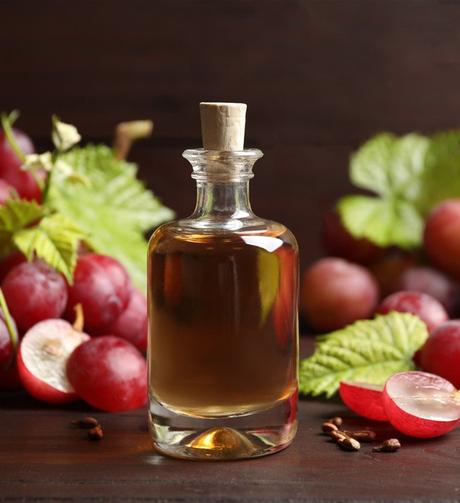
Grapeseed oil is made from grape seeds, which are the byproducts of wine-making. It has a faint, sweet smell and is neutral in flavor, meaning it will not affect the taste or aroma of your dish. It has a high smoke point of 421°F and can be used for high-heat cooking, including stir-frying and baking, as well as in raw applications such as dressings and sauces.
If you've run out of this versatile ingredient or are looking for alternatives that offer better health benefits, you need to check out these 7 grapeseed oil substitutes.
1. Canola Oil
Canola oil is chemically extracted from rapeseeds and has a light color and neutral flavor. It is rich in healthy omega-3 fatty acids and monounsaturated fats, with a fairly high smoke point of 400°F (which is 20° lower than grapeseed oil). As canola and grapeseed oil share similar cooking characteristics, canola oil is a suitable substitute for the original ingredient.
Canola oil is readily available at any supermarket or grocery store and is quite cheap. It's also extremely versatile, working well in a variety of cooking methods like barbecuing, stir-frying, and sauteing, as well as in baking and as a dressing. Its light flavor also does not interfere with the flavor of other ingredients in your dish.
2. Avocado Oil
Avocado oil, extracted from the pulp of avocado, is rich in vitamins E and A as well as healthy monounsaturated fats and antioxidants. It has a very high smoke point of 520°F, making it a great substitute for grapeseed oil, especially for cooking at high temperatures. However, avocado oil can be somewhat costly, so it is not a suitable alternative for individuals on a tight budget.
Avocado oil can be used for deep-frying, grilling, sauteing, baking and stir-frying purposes without affecting the recipe's flavor as its mild, nutty flavor reduces in intensity when heated. As for using it for garnishing, dressing, and in other raw applications, it will give your dish a little avocado flavor, but if you don't mind the tiny shift in flavor profiles, it works as a great substitute.
3. Corn Oil
Corn oil, which is extracted from maize - the germ of the corn plant - is rich in monounsaturated and polyunsaturated fats. It also has a smoke point of 450°F, making it an excellent substitute for grapeseed oil for high-heat cooking.
Corn oil can be substituted for grapeseed oil in deep frying preparations. It can also be used for cooking and baking as well as to make margarine, which is a spread used primarily for flavoring purposes. Corn oil is also one of the most widely used and affordable cooking oils on the market; just make sure to purchase organic cold-pressed varieties for better health benefits.
4. Olive Oil
Olive oil is made by grinding olives and extracting the oil using a chemical or mechanical process. It is light and smooth and has a delicate flavor. Olive oil is rich in vitamins E and K, omega-3 fatty acids, antioxidants, and monounsaturated fats. Although its smoke point of 350-410°F is not as high as other oils, it is still a good substitute for grapeseed oil in diverse types of cooking, but it shines best in baking recipes.
Olive oil comes in two types - virgin olive oil and extra virgin olive oil or EVOO. EVOO has a strong tangy flavor, a slight green hue, and a wonderfully light texture that works exceptionally well in salad dressing and as a garnish. Thanks to its emulsifying properties, it can also be used to replace grapeseed oil in homemade mayonnaise recipes.
5. Safflower Oil
Safflower oil is yellow in color and has a neutral flavor. It is extracted from the seeds of the safflower plant, which is a relative of the sunflower. It is high in monounsaturated and polyunsaturated fats, has similar health benefits to grapeseed oil, and has a high smoke point of 510°F, making it a good substitute for the original ingredient in baking and frying.
Safflower oil can be used for high-heat stir-frying and searing as well as to lend a light touch to salads since its neutral flavor will not overpower the other ingredients. The oil has a high burn point and does not solidify when stored at a cool temperature, making it perfect for salad dressings and vinaigrettes. However, if you're allergic to flowers, you should sit this one out.
6. Sunflower Oil
Sunflower oil, made from the seeds of sunflowers, is quite similar to safflower oil. It is a good source of linolenic acid, contains several vitamins and nutrients, and does not have any trans-fat. It has a high smoke point of 450°F and can be used in almost every recipe that calls for grapeseed oil.
You can use the mild, nutty-flavored, nutrient-dense sunflower oil for high-heat cooking such as deep-frying, roasting, stir-frying, baking, and sauteing as well as for dressing and garnishing. It's less expensive than grapeseed oil, which further cements its appeal as a substitute. Keep in mind that sunflower oil comes in different varieties, so read the labels carefully to choose the healthiest option.
7. Peanut Oil
Peanut oil, extracted from lightly roasted peanuts, is high in vitamin E and monounsaturated fats but has more saturated fats than most oils. It has a strong nutty flavor, does not absorb the flavor of other ingredients in the dish, and has a high smoke point of 450°F, making it an excellent substitute for grapeseed oil when used alongside complementary flavors.
When using it as a substitute, keep in mind that the deliciously tasty, nutty flavor of peanut oil might linger in dishes, so it would be a great option for roasting, stir-frying, or sauteing veggies or for making Asian-inspired dishes. It is also available in different forms. So, while the refined form of peanut oil is free from allergens, if you have a nut allergy, it would be best to explore other options.
